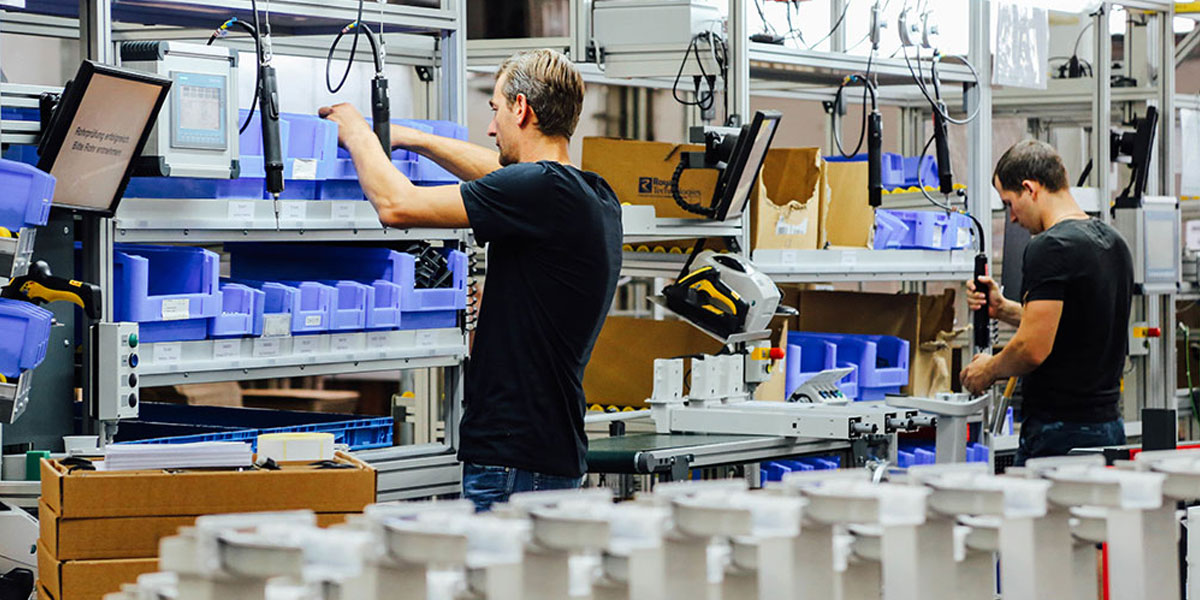Is your inventory not moving? Are you looking to increase overall efficiency in your small business? If you answered yes to either of these questions, then it’s time to look into changing your workflow for your operations.
Whether you utilize a Make-to-Order or Make-to-Stock system, implementing a new workflow can dramatically help increase product sales, reduce stationary inventory, and streamline your business. Which system is right for your business? Keep reading to find out.
Make to Order?
Make to order (MTO) products are defined quite simply - products that are manufactured for a specific customer’s order, allowing for full customization. MTO allows for customers to inform the manufacturer exactly what they want to their specifications for an end product that is perfectly unique from competitors.
Benefits of make-to-order products include minimized waste, total customization for customers, and reduced finished good inventory. The MTO production strategy relieves manufacturers of the excess inventory problems that occur when products don’t move off the shelves.
Commonly referred to as a pull-type supply chain, MTO does have some disadvantages depending on your business. Because orders are only fulfilled once the customer requests it, wait times for production can be longer than customers are willing to wait for. This also may make for irregular sale cycles and demands.
Implementing MTO Systems
MTO products are typically made for specialized industries that require many
specifications not found elsewhere.
Because of the high specifications and different raw materials needed to keep on hand, it is crucial for made-to-order manufacturers to implement an inventory management system, such as Order Time.
With an automated inventory management system, MTO manufacturers can keep track of all raw materials and orders using. Using the barcode scanning and bill of materials features, manufacturers can simply track all products with the click of a button. Work order and disassembly tools allow manufacturers to allocate the components needed to assemble the MTO product and keep production moving efficiently and seamlessly.
Make to Stock
Make to Stock systems, or MTS, are known as push systems. Commonly used for mass production of rapidly consumed goods, MTS products are made in advance and wait for customers to purchase them. Manufacturers use consumer reports and demand trends to predict rates of consumption and how much finished goods inventory will be needed on hand.
Forecasting plays a key role in MTS systems. By using historical data and sales analysis, manufacturers must match predicted demand and push production to replenish stock levels. This requires a larger Work in Process, or WIP, inventory to maximize equipment use and allow for overall productivity.
Make to Stock production is common for many reasons. It allows the manufacturer to organize resources effectively for the production at hand, schedule stock timing, and minimizes the consumer wait times. Using forecasts and trends, manufacturers can predict the demand for highly consumed goods and have them ready for sale at all times.
However, MTS can provide some challenges if forecasting is incorrect. This system’s strong reliance on consumer trends helps it prevent stockouts and overstocks, so inaccurate data can entirely throw production numbers off. In addition, because MTS allows for manufacturers to produce goods well in advance and keep them until consumers need them, there is a risk of perishability or obsolescence of the products.
Implementing an MTS System
Make-to-Stock systems’ strong dependence on consumer trends and purchase history makes it increasingly important for an automated inventory management system to accurately track all inventory.
Tracking all inbound inventory from point of purchase to receiving it should be tracked to prevent misplacement during production. It is crucial to track raw materials throughout the production cycle to WIP to implement a seamless flow of transactions throughout the system.
Vendor management features allow MTS manufacturers to organize their products systematically. These features include multiple vendors per item, lead times, costs, vendor part numbers, and other purchasing details that may be overlooked. Using an automated system like Order Time, you can easily eliminate human error and missed opportunities within your supply chain.
As your workflow grows and production levels rise, implementing Order Time’s cloud-based software can remove the burden of production planning and maintenance with the click of a button. Giving you visibility into production, purchasing, warehousing, and more, your MTO and MTS systems will function smoother than ever before. To learn more about Order Time, click here.
We're always adding new Features, so if you have one you can't live without, let us know using the Contact Us Form.For more information check out our Order Time Cheat Sheet.
|
Find out why it's time to migrate into the cloud.
Follow us!















